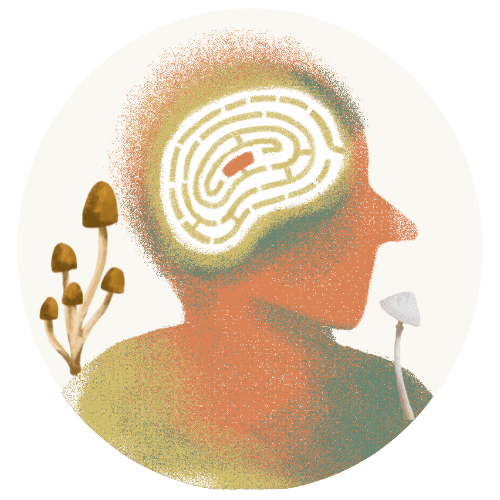LSD

LSD (lysergic acid diethylamide) is the quintessential psychedelic—a substance capable of radically altering perception, thought, and sense of self in doses smaller than a grain of sand. Unlike plant medicines, this semi-synthetic compound offers an extended 8-12 hour journey marked by vivid visual patterning, time distortion, and profound cognitive shifts.
At Places to Trip, we approach LSD not as a party drug but as a powerful tool for introspection, creativity, and existential exploration when used with proper intention. Its effects are highly setting-dependent: a forest becomes a living cathedral, music unfolds in multidimensional layers, and ordinary objects may reveal extraordinary significance.
History
Discovered accidentally in 1938 by Swiss chemist Albert Hofmann, LSD's psychedelic properties weren't recognized until his famous 1943 bicycle ride home after self-administration. Throughout the 1950s-60s, it was studied extensively for psychiatric applications (including alcoholism treatment) before becoming synonymous with 1960s counterculture. After global prohibition in 1971, research ceased until recent revival studying its potential for:
- Cluster headache relief (often called "suicide headaches")
- End-of-life anxiety reduction
- Creativity enhancement in problem-solving
Contemporary use exists on a spectrum from recreational to therapeutic, with microdosing gaining popularity for cognitive benefits.
Effects
- Visual: Geometric patterns (eyes open/closed), enhanced colors, morphing surfaces
- Cognitive: Accelerated/looping thoughts, synesthesia (e.g., "seeing" music)
- Emotional: Euphoria to existential terror—highly set/setting dependent
- Temporal: Minutes feel like hours; profound sense of "timelessness"
- Physical: Energy surges, pupil dilation, occasional nausea during onset
At higher doses (200μg+), users may experience: - Ego dissolution (loss of self/other boundaries)
- Mystical-type experiences (per research at Johns Hopkins)
- Temporary "reality disintegration" requiring experienced sitters
Duration
- Onset: 30-90 minutes (slower with food)
- Come-up: Often accompanied by physical tension/nausea
- Peak: 3-6 hours of intense effects
- Comedown: Gradual return to baseline over 4-6 hours
- Afterglow: 12-24 hours of residual stimulation/reflection
Pro Tip: Start early (10AM) to avoid sleepless nights; benzodiazepines can abort bad trips.
Medical Uses
While not FDA-approved, current research explores:
- Depression/anxiety (especially existential distress in terminal patients)
- Addiction interruption (noted in early alcoholism studies)
- Neuroplasticity enhancement (lasting personality changes in openness)
Therapy models emphasize:
- Lying down with eyeshades/curated music
- Avoiding visual distractions during peak
- Post-session integration therapy
Risks & Side Effects
- Bad trips: Panic attacks/paranoia (mitigated by sitters & setting)
- HPPD: Rare persistent visual disturbances (<4% of users)
- Psychosis trigger: In those predisposed to schizophrenia
- Physical safety: Impaired judgment of real dangers (heights, traffic)
- Sleep disruption: 12+ hours of alertness post-dose
Safer-Use Practices
- Test your blotter (Ehrlich reagent turns purple for real LSD)
- Start low (50-100μg for first timers; avoid "double-dipped" myths)
- Sitter essential for doses >150μg
- Ideal settings:
Nature (with safe boundaries)
Familiar indoor spaces with art/music
Avoid mirrors (can cause distress) - Comfort kit:
Ginger tea (nausea)
Sunglasses (light sensitivity)
Notebook for insights
Legality Awareness
- Illegal worldwide except:
Religious use: Santo Daime/UDV churches
Decriminalized: Parts of U.S. (Oakland, CA)
Research: FDA-approved studies only - Darknet markets: Primary source (test everything!)
Set & Setting Intro
LSD amplifies environmental energy exponentially:
- Golden Rules:
Stable mindset: Avoid during emotional turmoil
Safe container: No obligations for 24 hours
Trusted companions: Or solitude if experienced - Transformative Settings:
Planetariums/starry skies: Cosmic connection
Art museums: Enhanced pattern recognition
Waterfronts: Flowing movement mirrors thought streams - Avoid:
Crowded urban areas (sensory overload)
Family gatherings (social mask disintegration)
Digital screens (uncanny valley effect)
